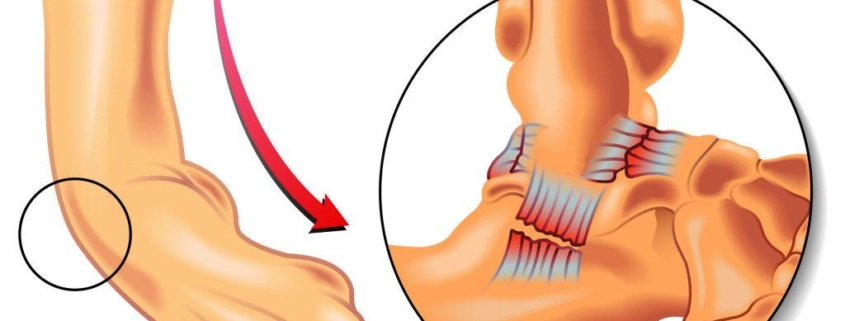
Ankle Sprain
Overview
A sprained ankle is a common injury, typically where the ligaments that support the ankle stretch and tear, causing pain and swelling. Each day in the U.S., approximately 25,000 people experience an ankle sprain. Although it is quite common among athletes, it can happen to anyone at any age. With the right care, most people can recover from an ankle sprain within 2-6 weeks.
Types of Ankle Sprains
There are two main types of ankle sprains, each distinguished by the location of the injury.
-
- Lateral Sprain: This is the most common type of sprain, occurring when the foot rolls inward and the outer ankle ligaments are stretched.
-
- Medial Sprain: Less common, this occurs when the foot rolls outward, stretching the ligaments on the inside of the ankle.
Causes
Most ankle sprains occur during physical activities, either from a fall, an awkward landing, or a collision. Other risk factors include:
-
- Walking or running on uneven surfaces
-
- Previous ankle injuries
-
- Wearing shoes that do not fit properly or offer insufficient support
-
- Weaker muscles or a lack of conditioning
Symptoms
The most common symptoms of an ankle sprain include:
-
- Pain or discomfort, particularly when walking or bearing weight on the affected ankle
-
- Swelling and bruising around the ankle
-
- Restricted range of motion
-
- Tenderness upon touch
Less common symptoms may include:
-
- Popping sensation or sound at the time of injury
-
- Stiffness in the ankle joint
Diagnosis
A healthcare provider can diagnose an ankle sprain by conducting a physical examination of the ankle. They will check for areas of tenderness, swelling, and bruising. They may ask about the injury and any symptoms you are experiencing. If the injury is severe or if a fracture is suspected, an X-ray or MRI might be ordered.
Treatment Options
The severity of the sprain will determine the appropriate treatment.
-
- Mild Sprains: Treatment usually involves rest, ice, compression and elevation (known as RICE), as well as over-the-counter pain medication.
-
- Moderate to Severe Sprains: May require immobilization with a brace or cast, physical therapy, or in severe cases, surgery.
Living With Ankle Sprain
If treated properly and allowed time to heal, most people recover well from an ankle sprain. Here are some tips to help manage your condition:
-
- Rest and elevate your ankle as much as possible.
-
- Use an ice pack on your ankle, for 15-20 minutes at a time, every 2-3 hours.
-
- Wear a compression bandage or brace as instructed by your healthcare provider.
-
- Engage in gentle exercises to help restore strength and range of motion.
When to Seek Help
Prompt medical attention for an ankle sprain can prevent further complications. Seek immediate medical help if you are unable to bear weight on the injured ankle, if the pain or swelling is severe, or if your symptoms do not improve after a week of home treatment. Remember, a severe ankle sprain can feel just like a broken bone, so it’s always better to err on the side of caution.
